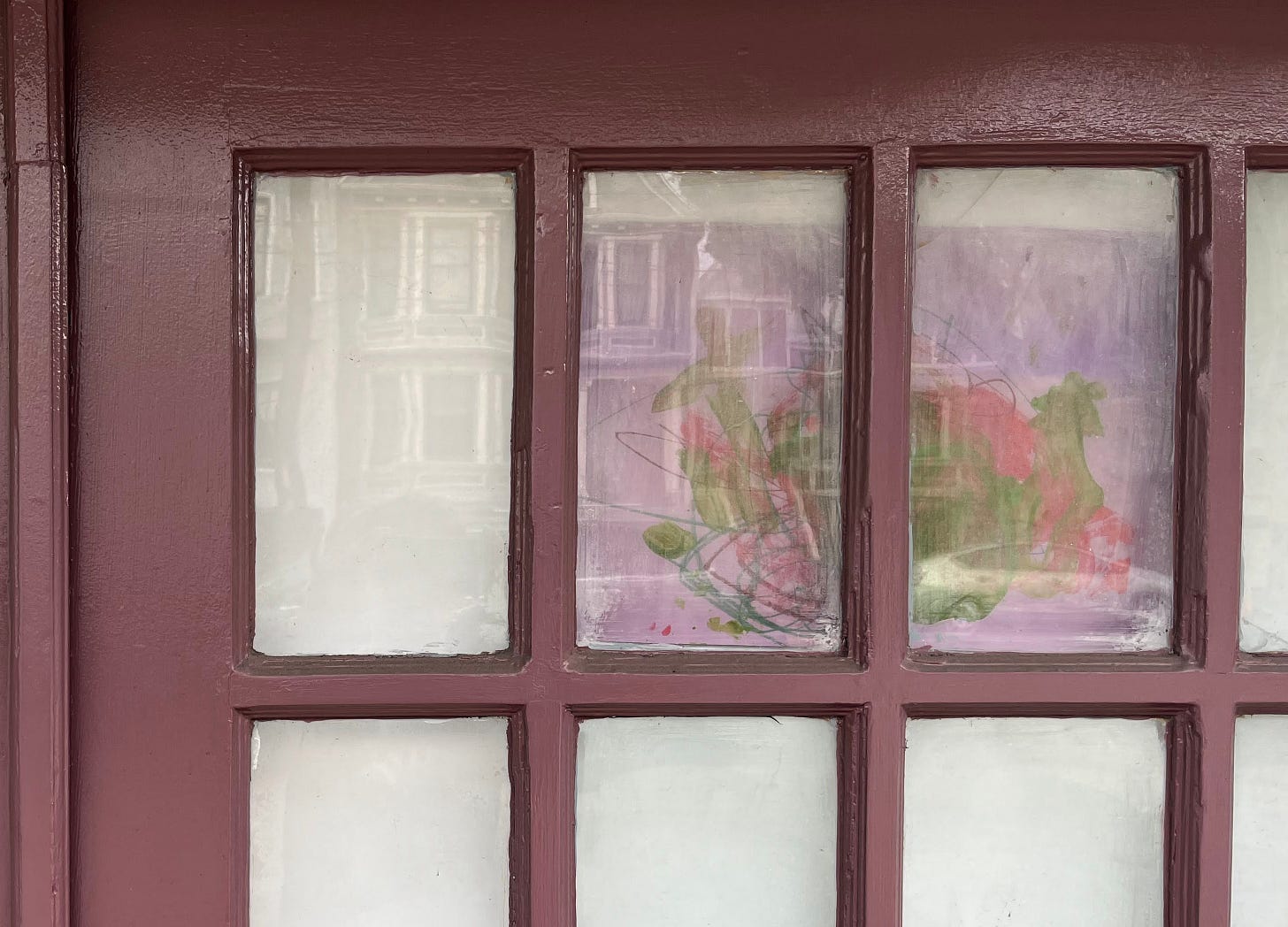Art Garage
A Window Into Noe Art
Art Garage represents the most "low-tech" project in our experimental series, and interestingly, the one that required the most hands-on collaboration with my partner—who happens to be the tool-savvy, handcraft expert in our household.
The Genesis
The concept is simple: our garage has windows facing the street—why not transform them into the frames of an art display?
Initially, I explored several high-tech approaches. I experimented with Processing (p5.js) to create vector images from AI-generated code sketches that could be printed on acrylic and mounted on plywood. I also dabbled with various AI image generation programs for non-programmatic visuals.
But as with many creative partnerships, finding images we both loved proved challenging. Even after attending SF Art Week and visiting numerous galleries in search of artists for a site-specific installation—meeting amazing creators and discovering new spaces along the way—we couldn't quite agree on what would be the perfect art piece for our space.
The Obvious Solution
The breakthrough came from my partner's suggestion: start with art we could both instantly approve—our daughter's creations. This cut through our decision paralysis and gave us the momentum to begin.
We sketched the design and made a few pilgrimages to the hardware store. As the least handy person in our home, even learning how the hardware store cuts large sheets of wood was an education for me. My partner devised a smart mounting system using hinges and screws, while I found unexpected joy in the meditative process of applying three coats of paint to the wood base.
Despite careful measurements, I initially purchased pieces that were too small for our windows! I started over with another hardware store trip for thicker wood that wouldn't warp. While our gallery currently showcases just two pieces, we're excited to expand with more artwork from our daughter and friends.
Looking Forward
Our ultimate vision is to display works from local artists, but starting with family art has provided valuable lessons about the practical challenges of an outdoor gallery. The current mounting system works adequately, though we've discussed more dynamic possibilities like a rotating canvas (potentially powered by a tie hanger motor).
My partner noticed sun damage affecting the artwork after just a few days—our windows are quite old, and we'll definitely need UV protection on the window for future installations. While I've been tempted to incorporate digital elements or screens, I've come to appreciate the charm of this extremely low-tech approach to street-level art sharing.
We also plan to add QR codes near the garage so passersby can learn about the featured artists and their work.
Real-World Impact
Though it's our most technically modest project, Art Garage is the first to reach "production" status—truly facing and engaging with our community. This experience has reinforced the value of site-specific installation, non-digital approaches, and the special significance of creating tangible work in the physical world rather than just contributing to the digital ether.
There's something particularly meaningful about showcasing a toddler's creative expression—as my partner jokes, she sometimes struggles to distinguish between our daughter's artwork and my own creations. I take this as both a compliment to my work and an acknowledgment of our daughter's innate artistic talent.
If you have local artwork you'd like to feature, are interested in creating your own Art Garage, or simply want to learn more about this project, reach out to seb@noefoundry.com.


